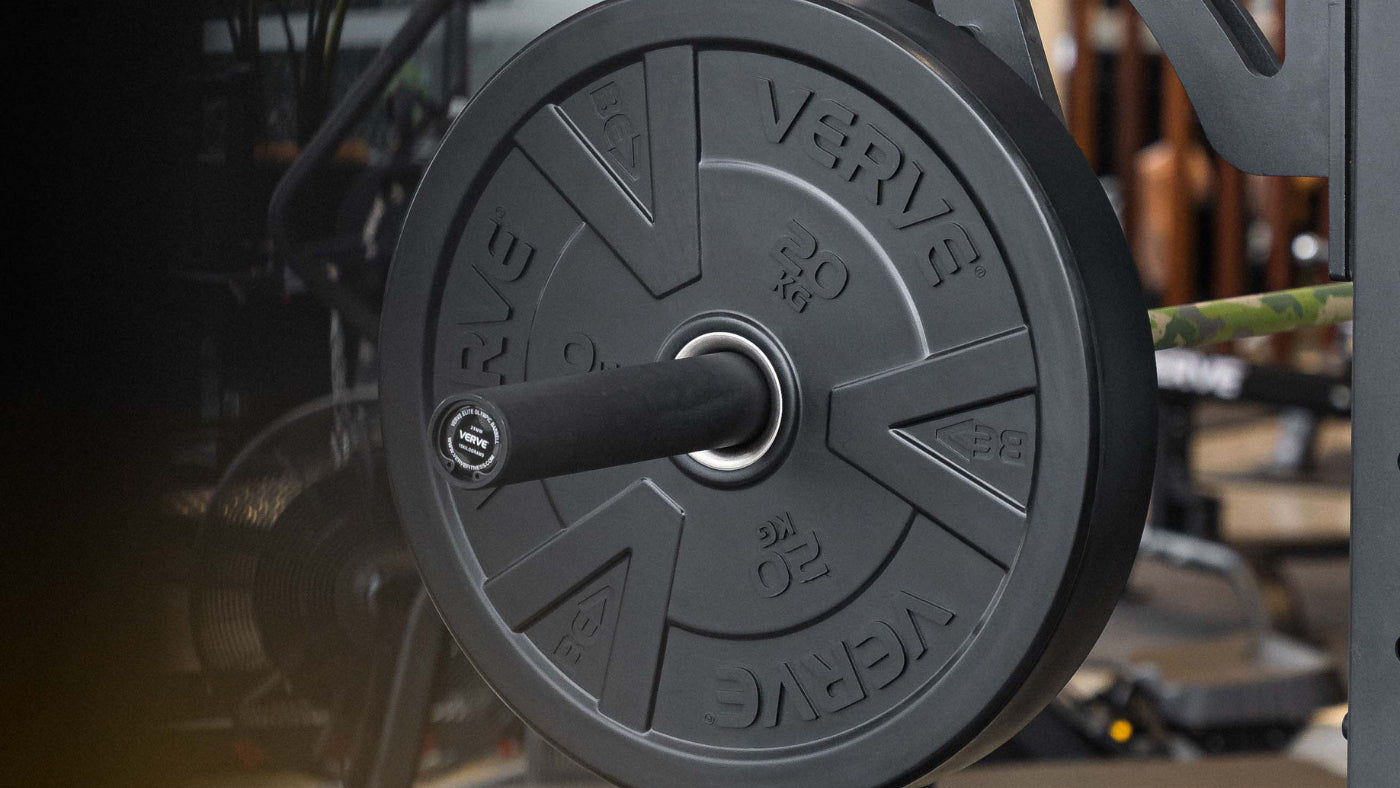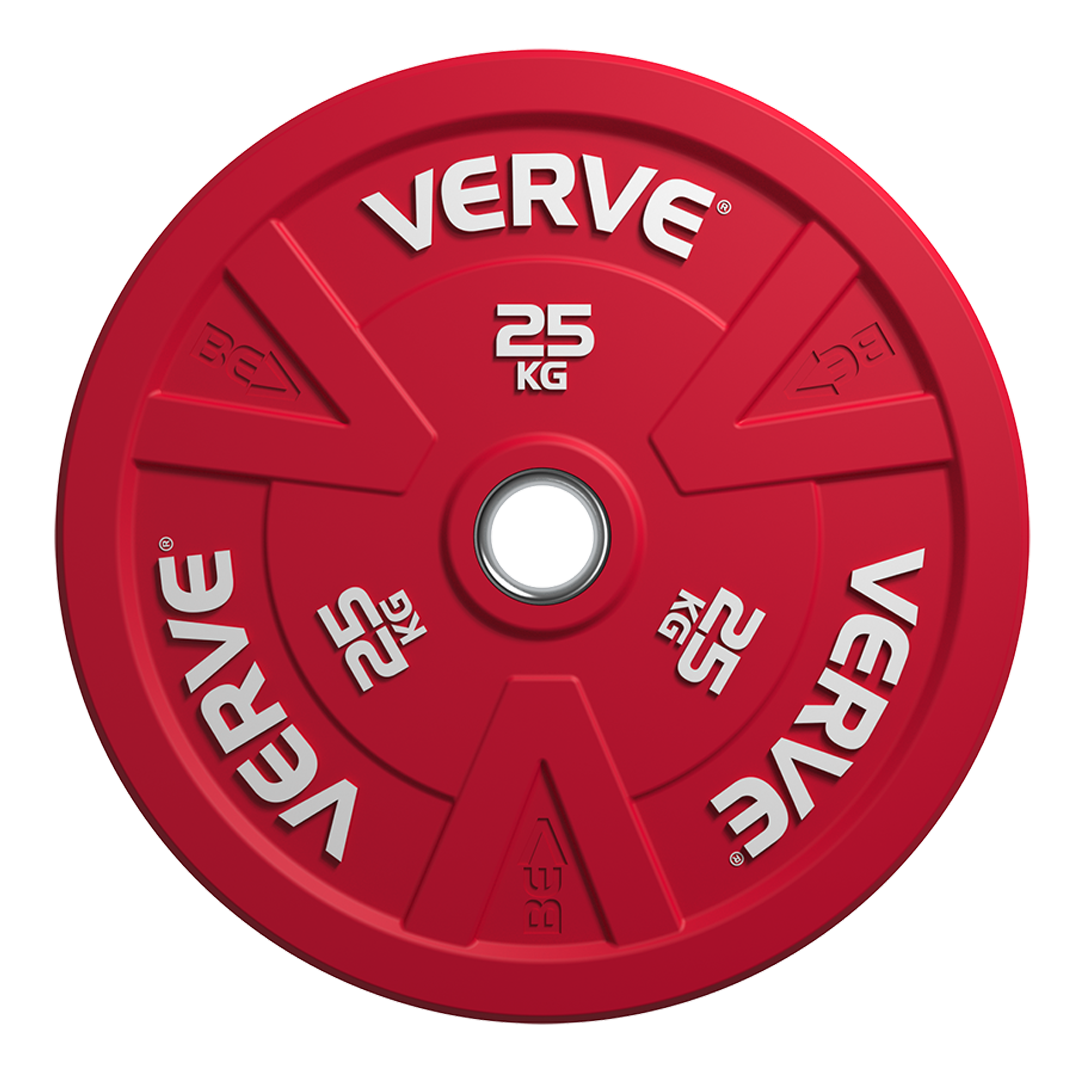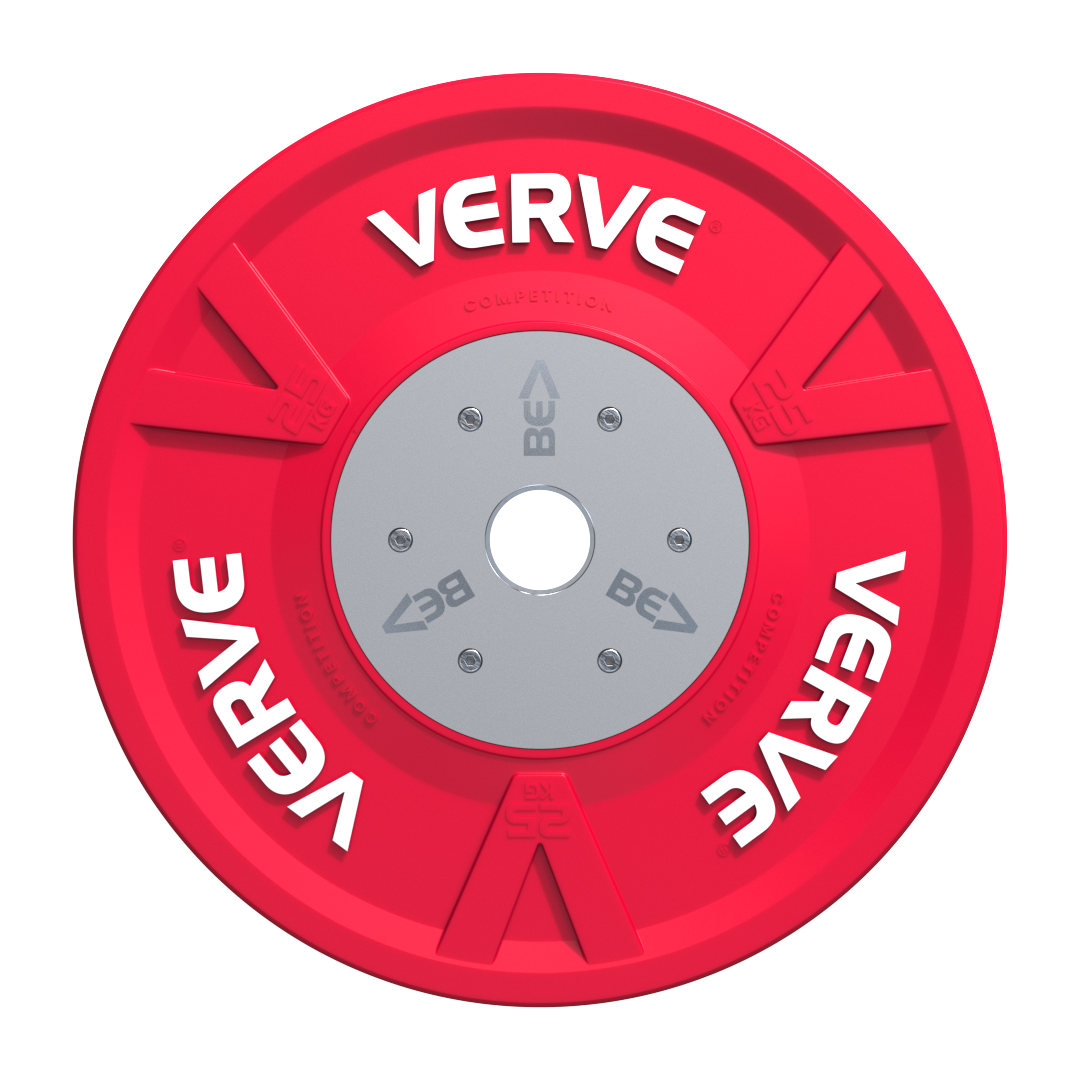Gym equipment is typically quite low maintenance and that’s especially true for home gym users (unless you’re doing something crazy, in which case we’d love to hear about it!) and bumper plates are no different.
Your equipment is an investment and so it’s probably important that it lasts for as long as possible (so you can keep using it OR you can pass it along to someone else). That said, you don’t want to spend your life maintaining your equipment! SO… let’s set out the lazy way to maintain bumper plates.
Bumper plates are made with thick rubber but the steel ring in the centre of the bumper plate (insert) means different cleaning methods are needed to ensure longevity. There are different types of rubber (and there are even PU plates out there) but rubber, in almost all forms, can be maintained in a similar way.

Lazy Maintain Overview
If you’re reading this than you probably have bumper plates (or are considering them) and if you’ve got a functional focus (that’s a nice way to say CrossFit) then bumpers are what you’ll need.
Even if you’re not doing many functional movements, a set of bumpers a worthwhile investment because they offer up the benefits of most other plates but are easy to maintain, look cool and you can drop them (which, if you’ve not done, is pretty fun). Pro-tip, don’t drop 5KG plates on their own! No matter how much fun they are or function they add to your gym, they won’t as long without proper care and maintenance.
As you’re probably already aware, bumper plates are designed to take some serious punishment (except for those pesky 5KG plates) and with the addition of the right flooring, bumpers will last you a very long time if you look after them.

Bumper Plate Cleaning
No matter how much your bumper plates cost you, keeping them will increase their longevity. Most bumper plates are made from rubber (virgin or crumbed) and so are crazy robust. That’s not to say they aren’t easily damaged but most damage comes by way of poorly selected cleaning products and chemicals, both of which can cause damage or discolouration.
One of the benefits of most bumper plates is that the insert (or centre) is the only metal in the plate, so rusting should never really be an issue if you maintain your take some simple steps to maintain your plates.
When it comes to cleaning the rubber of your plate, your best bet is to stick to the basics. Wipe off the plate with a dry cloth or microfibre towel, use some warm water and a little regular dish soap on that cloth wipe away the sweat, oil, dirt or other build-up of grime that might be there. Final step is to dry with a separate cloth or towel.
Avoid harsher cleaning products as the chemicals will wear away the rubber and degrade the plates quickly – in some cases you can create an unfortunate chemical reaction and discolour your plate.
It’s better not to get the insert of your bumper plate too wet (calibrated plates especially) because water + steel = rust. A quick wipe with a dry cloth followed by a wipe with a cloth sprayed with 3-In-One or WD-40 should keep things rust free and fit for purpose.
Bumper plates aren’t very useful without a barbell – you’ll want to keep that in tip-top shape too! Read more about that HERE, but day-to-day maintenance is an easy two-step process. Start with a quick pass over the bar with a soft bristle brush (to get rid of chalk in the knurling) then follow up with a wipe of the whole bar with conservative amount of 3-In-One oil or WD-40 on a cloth.
Quick tip – don’t forget about your collars! The inside of your collars can get a bit nasty so giving them a wipe is a wise idea. If you’re using spring collars, just give them a wipe with the cloth you use for your plate ring or barbell. If you’ve treated yourself and have another kind of collar, then you might skip the oil and just use a dry cloth to give them a quick once-over. This little bit of maintenance also means there won’t be stuff in your collars that could damage your bar when you slide the collar on/off.

Bumper Plate Storage
Maybe you’re going for the ‘lived in look’ at your gym, but storage of your bumper is quite important. Many people start working out with iron plate or multi-grip PU plates – both being the most common plate in a commercial gym. The difference is that these plates are solid metal (bumpers aren’t) so are less susceptible storage induced dramas!
The heavier bumper plates aren’t likely to warp or deform if you lean them up against a wall but 5KG and 10KG plates can start to deform if not stored correctly and that’s especially true in warm conditions.
Bumper plates are also way thicker than most other styles of plates so it’s likely you want to get some space back by picking an efficient storage solution.
A plate tree is a practical solution there is when it comes to bumper plate storage and gives you the chance to get your gear off the ground, but also makes them quicker go grab during a set. Some come with wheels (bonus!) so you can wheel your weights to the bar vs. rolling or carrying them around.
There are other options to consider:
1. Wall-mounted plate storage. There’s always some wall space! A few holes and some solid screws will see you create some new floor space. Make sure you pick a solid structure and don’t go too high (because a plate to the face isn’t anyone’s idea of a good time).
2. Toaster Rack – These racks are strong and stable and will fit on all the plates you’ll need at the cost of taking up much more floor space. They offer up the fastest way to get the right plate (regardless of weight) onto your bar because the little separators keep each plate free and available to grab.
3. Vertical Holder – A tall and tidy way to manage plates – these are a vertical peg with legs, and some come on wheels (making life that little bit easier).
4. Rack and Rig Storage Horns – if you have a rack then these are the most convenient storage solution for bumper plates. Bolted directly to your rack or rig – these horns keep your plates close and easy to access. Some storage horns are ‘quick release’ so you can move them around (when they’re empty).
5. Plate & Barbell Storage – best of both two worlds, a plate and barbell storage solution gives you a small format solution to get your gear off the ground and all in one spot. Most are in a plate tree format with barbell holders on each end.
There are many other storage solutions and ways to keep your gear tidy, but the important thing is to keep the equipment stored in a way that minimises bending while also limiting contact with surfaces that might be moist or that might react.

Outside Storage?
Yes, this is a real question. You might lack for space, have an outside gym, a set-up that isn’t well protected from the elements or just love lifting au natural, but whatever your vibe, if you need to store your plates outside, you can (but it isn’t great). Heat can deform plates; sun can discolour and degrade rubber and moisture can ruin your insert.
If you have no choice but to leave your bumpers outside, focus on keeping them out of direct sunlight and cover/wrap them with a waterproof cover or tarp and check on them regularly (because you don’t want your investment ending up on Facebook Marketplace). In the short-term, storing your bumpers outside isn’t likely to cause lasting damage to the rubber of your plates, but the insert (metal bit) will get hit hard so oil that part regularly.
Summary
Bumper plates are designed to withstand impact from Olympic lifts so should stand up well to home gym routine, but regular maintenance regime will keep them on your bar for longer.
Storage is best inside, securely on a plate storage solution that is out of the weather (especially sun).
Cleaning should be regular and without chemicals (soap and water) with a quick wipe-off to start, followed by some suds and finished with a snappy towel-off.
Gym equipment is typically quite low maintenance and that’s especially true for home gym users (unless you’re doing something crazy, in which case we’d love to hear about it!) and bumper plates are no different.
Your equipment is an investment and so it’s probably important that it lasts for as long as possible (so you can keep using it OR you can pass it along to someone else). That said, you don’t want to spend your life maintaining your equipment! SO… let’s set out the lazy way to maintain bumper plates.
Bumper plates are made with thick rubber but the steel ring in the centre of the bumper plate (insert) means different cleaning methods are needed to ensure longevity. There are different types of rubber (and there are even PU plates out there) but rubber, in almost all forms, can be maintained in a similar way.

Lazy Maintain Overview
If you’re reading this than you probably have bumper plates (or are considering them) and if you’ve got a functional focus (that’s a nice way to say CrossFit) then bumpers are what you’ll need.
Even if you’re not doing many functional movements, a set of bumpers a worthwhile investment because they offer up the benefits of most other plates but are easy to maintain, look cool and you can drop them (which, if you’ve not done, is pretty fun). Pro-tip, don’t drop 5KG plates on their own! No matter how much fun they are or function they add to your gym, they won’t as long without proper care and maintenance.
As you’re probably already aware, bumper plates are designed to take some serious punishment (except for those pesky 5KG plates) and with the addition of the right flooring, bumpers will last you a very long time if you look after them.

Bumper Plate Cleaning
No matter how much your bumper plates cost you, keeping them will increase their longevity. Most bumper plates are made from rubber (virgin or crumbed) and so are crazy robust. That’s not to say they aren’t easily damaged but most damage comes by way of poorly selected cleaning products and chemicals, both of which can cause damage or discolouration.
One of the benefits of most bumper plates is that the insert (or centre) is the only metal in the plate, so rusting should never really be an issue if you maintain your take some simple steps to maintain your plates.
When it comes to cleaning the rubber of your plate, your best bet is to stick to the basics. Wipe off the plate with a dry cloth or microfibre towel, use some warm water and a little regular dish soap on that cloth wipe away the sweat, oil, dirt or other build-up of grime that might be there. Final step is to dry with a separate cloth or towel.
Avoid harsher cleaning products as the chemicals will wear away the rubber and degrade the plates quickly – in some cases you can create an unfortunate chemical reaction and discolour your plate.
It’s better not to get the insert of your bumper plate too wet (calibrated plates especially) because water + steel = rust. A quick wipe with a dry cloth followed by a wipe with a cloth sprayed with 3-In-One or WD-40 should keep things rust free and fit for purpose.
Bumper plates aren’t very useful without a barbell – you’ll want to keep that in tip-top shape too! Read more about that HERE, but day-to-day maintenance is an easy two-step process. Start with a quick pass over the bar with a soft bristle brush (to get rid of chalk in the knurling) then follow up with a wipe of the whole bar with conservative amount of 3-In-One oil or WD-40 on a cloth.
Quick tip – don’t forget about your collars! The inside of your collars can get a bit nasty so giving them a wipe is a wise idea. If you’re using spring collars, just give them a wipe with the cloth you use for your plate ring or barbell. If you’ve treated yourself and have another kind of collar, then you might skip the oil and just use a dry cloth to give them a quick once-over. This little bit of maintenance also means there won’t be stuff in your collars that could damage your bar when you slide the collar on/off.

Bumper Plate Storage
Maybe you’re going for the ‘lived in look’ at your gym, but storage of your bumper is quite important. Many people start working out with iron plate or multi-grip PU plates – both being the most common plate in a commercial gym. The difference is that these plates are solid metal (bumpers aren’t) so are less susceptible storage induced dramas!
The heavier bumper plates aren’t likely to warp or deform if you lean them up against a wall but 5KG and 10KG plates can start to deform if not stored correctly and that’s especially true in warm conditions.
Bumper plates are also way thicker than most other styles of plates so it’s likely you want to get some space back by picking an efficient storage solution.
A plate tree is a practical solution there is when it comes to bumper plate storage and gives you the chance to get your gear off the ground, but also makes them quicker go grab during a set. Some come with wheels (bonus!) so you can wheel your weights to the bar vs. rolling or carrying them around.
There are other options to consider:
1. Wall-mounted plate storage. There’s always some wall space! A few holes and some solid screws will see you create some new floor space. Make sure you pick a solid structure and don’t go too high (because a plate to the face isn’t anyone’s idea of a good time).
2. Toaster Rack – These racks are strong and stable and will fit on all the plates you’ll need at the cost of taking up much more floor space. They offer up the fastest way to get the right plate (regardless of weight) onto your bar because the little separators keep each plate free and available to grab.
3. Vertical Holder – A tall and tidy way to manage plates – these are a vertical peg with legs, and some come on wheels (making life that little bit easier).
4. Rack and Rig Storage Horns – if you have a rack then these are the most convenient storage solution for bumper plates. Bolted directly to your rack or rig – these horns keep your plates close and easy to access. Some storage horns are ‘quick release’ so you can move them around (when they’re empty).
5. Plate & Barbell Storage – best of both two worlds, a plate and barbell storage solution gives you a small format solution to get your gear off the ground and all in one spot. Most are in a plate tree format with barbell holders on each end.
There are many other storage solutions and ways to keep your gear tidy, but the important thing is to keep the equipment stored in a way that minimises bending while also limiting contact with surfaces that might be moist or that might react.

Outside Storage?
Yes, this is a real question. You might lack for space, have an outside gym, a set-up that isn’t well protected from the elements or just love lifting au natural, but whatever your vibe, if you need to store your plates outside, you can (but it isn’t great). Heat can deform plates; sun can discolour and degrade rubber and moisture can ruin your insert.
If you have no choice but to leave your bumpers outside, focus on keeping them out of direct sunlight and cover/wrap them with a waterproof cover or tarp and check on them regularly (because you don’t want your investment ending up on Facebook Marketplace). In the short-term, storing your bumpers outside isn’t likely to cause lasting damage to the rubber of your plates, but the insert (metal bit) will get hit hard so oil that part regularly.
Summary
Bumper plates are designed to withstand impact from Olympic lifts so should stand up well to home gym routine, but regular maintenance regime will keep them on your bar for longer.
Storage is best inside, securely on a plate storage solution that is out of the weather (especially sun).
Cleaning should be regular and without chemicals (soap and water) with a quick wipe-off to start, followed by some suds and finished with a snappy towel-off.










